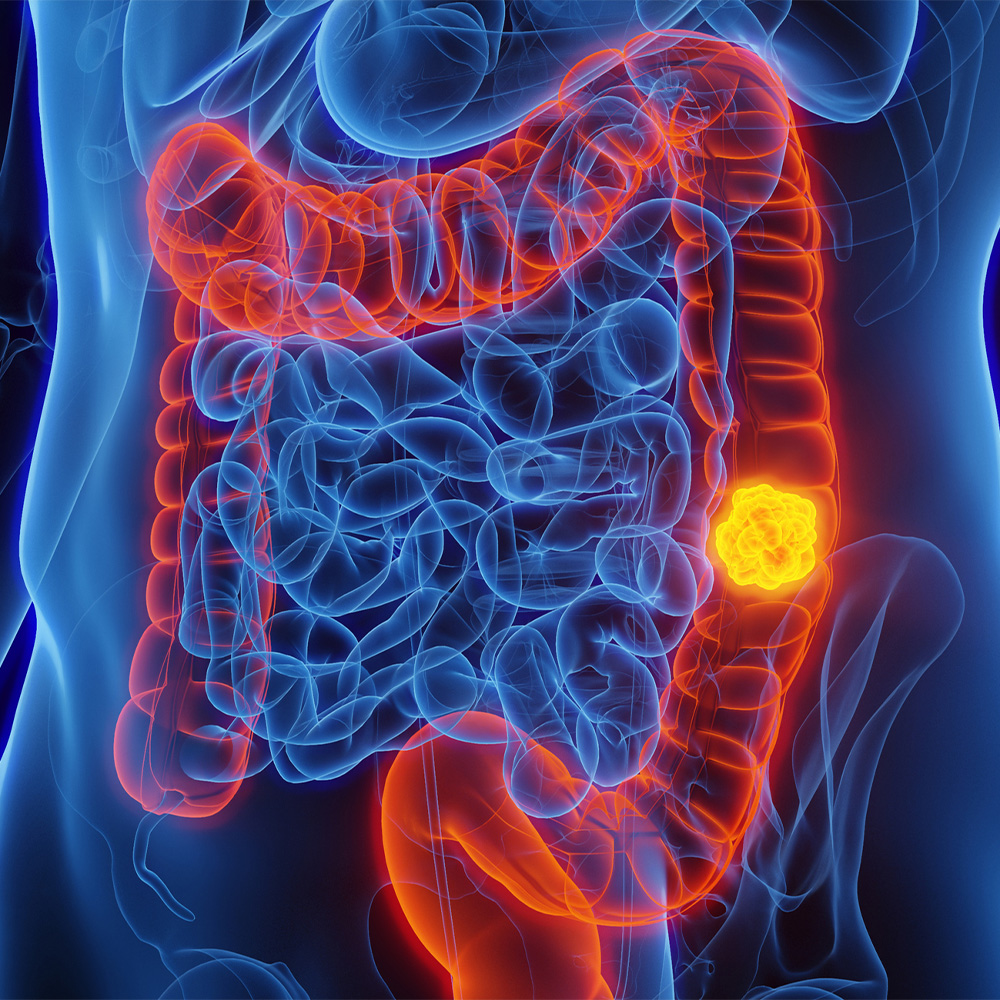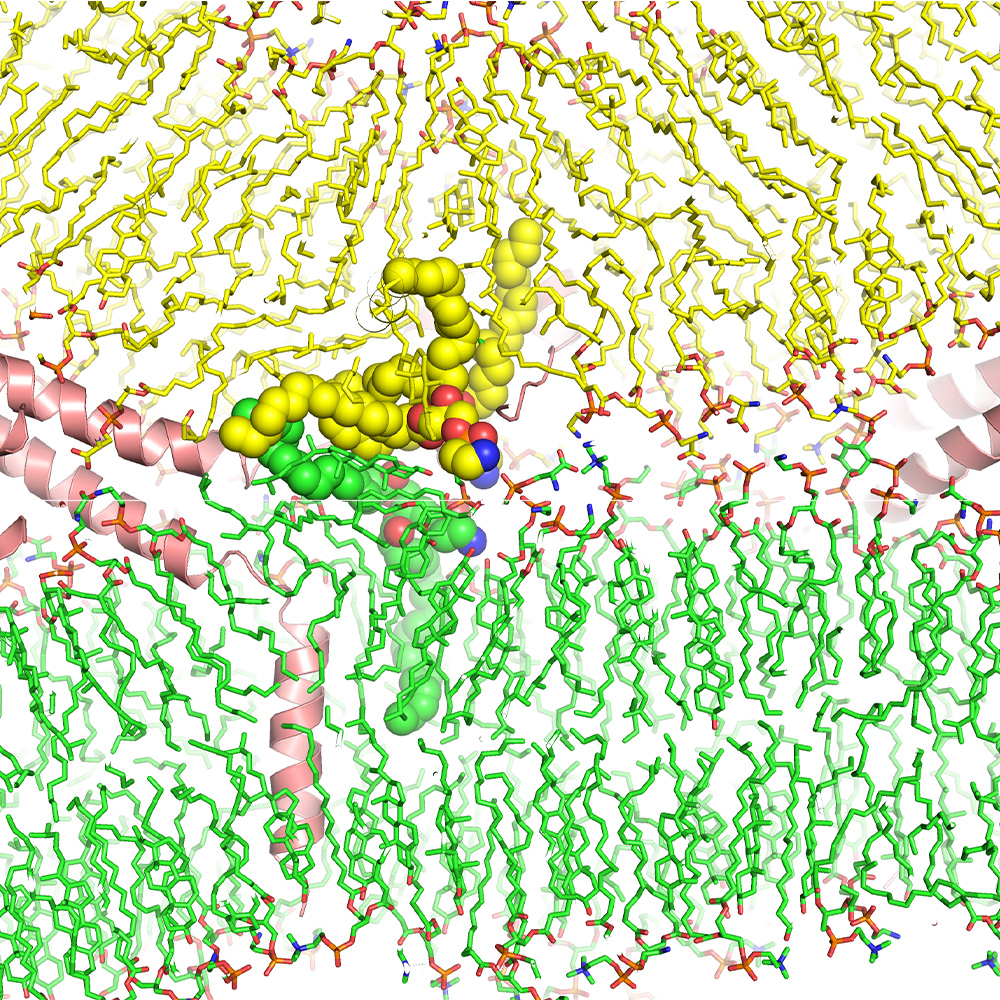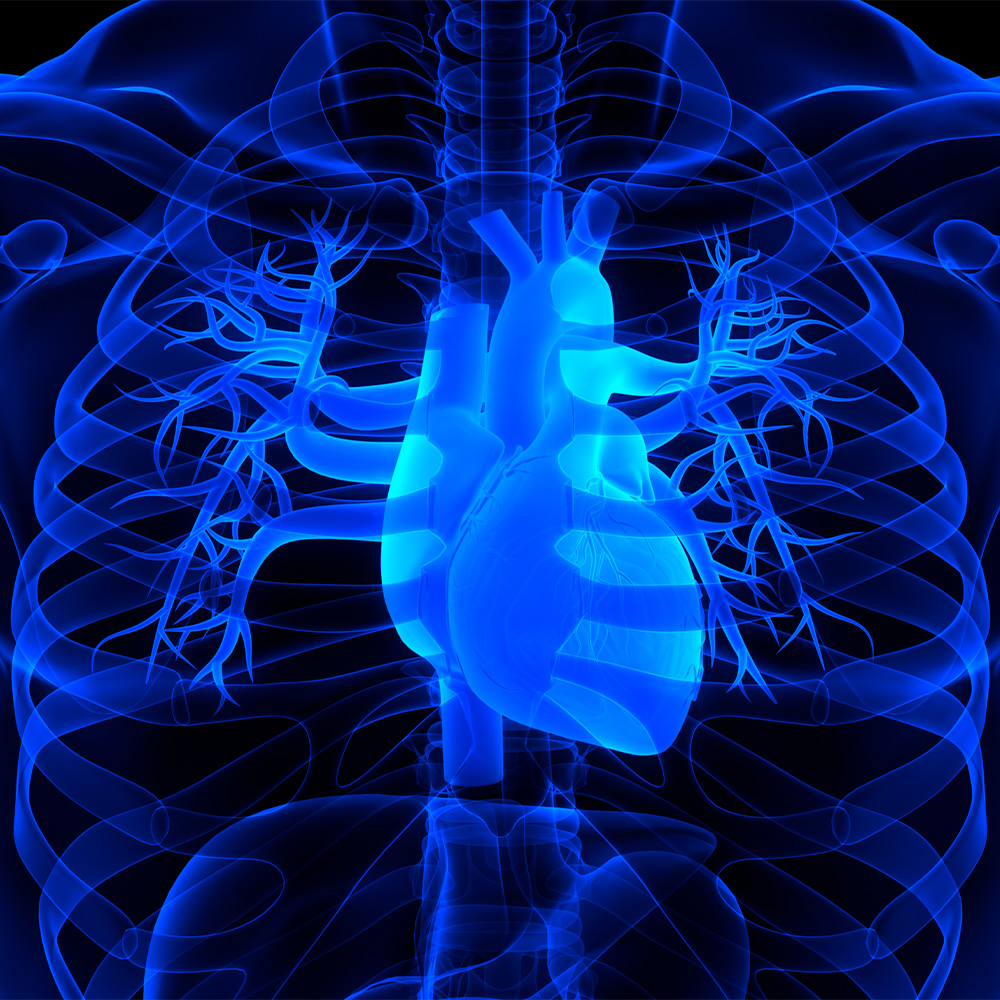Science in the City event opens brain lab doors to the public
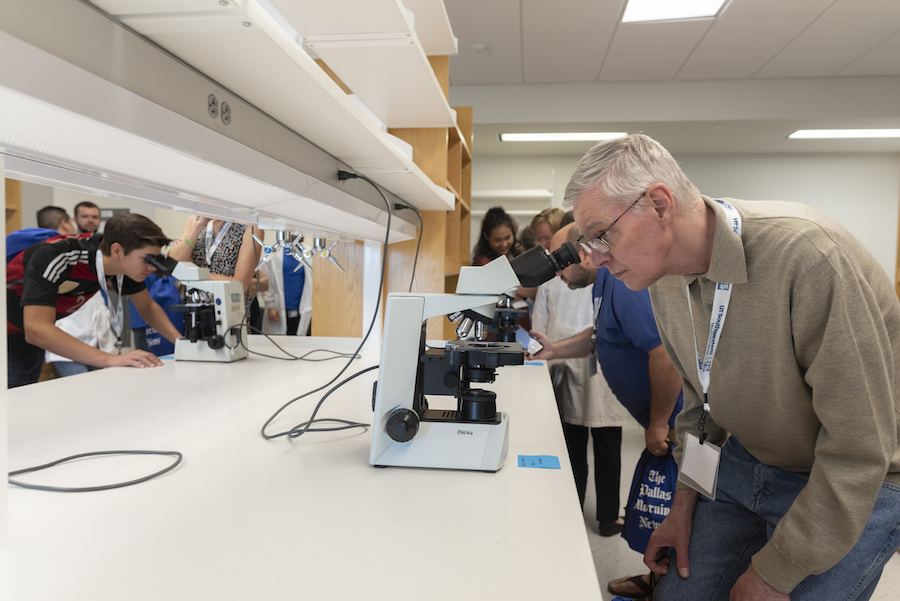
Dallas-area residents and their children got a rare, inside peek into some of the cutting-edge research taking place at UT Southwestern when the University opened the doors of its labs for the recent Science in the City.
The collaborative partnership that includes UT Southwestern and The Dallas Morning News drew 125 newspaper subscribers and UT Southwestern guests to the campus on Saturday, April 28, for what was cleverly called “a tour of our brain.”
Participants were divided into five groups at the C. Kern Wildenthal Research Building for a morning of hands-on science demonstrations, mini-lectures by researchers, and lots of brain teasers. Topics included concussion awareness, brain imaging, and Alzheimer’s research. Dr. Mark Goldberg, Chair of Neurology and Neurotherapeutics and Associate Vice President at the Peter O’Donnell Jr. Brain Institute, presided over the event and welcomed the group of science aficionados.
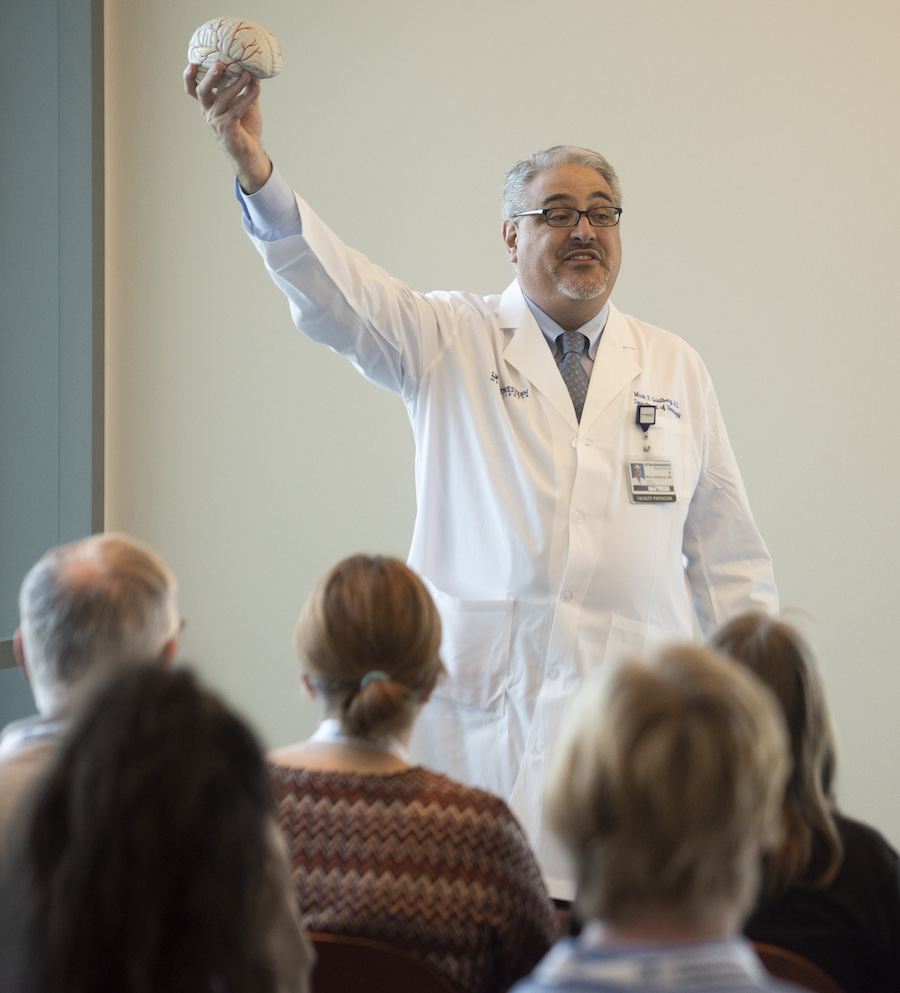
“I could have spent all my time listening to the scientists talk about Alzheimer’s research,” said Susan Aranow, who with her husband, Rick, drove in from Highland Village for the event. “My mother has Alzheimer’s, so I thought today might help me get a handle on taking care of her. It was an extremely informative time.”
Sixth-grader Jax Dwyer came with his parents, Dave and Dawn, from Glenn Heights. The youth appeared to soak in everything, winning three prizes for trivia questions tossed to his tour group.
“The most interesting thing I learned was that the human brain shrinks with Alzheimer’s,” Jax said. “We saw a brain that weighed about a pound, which is less than the weight of the brain in a healthy newborn baby.”
Dr. C. Munro Cullum, Professor of Psychiatry, Neurological Surgery, Neurology and Neurotherapeutics, and Rehabilitation Counseling, brought along a team from his research group to discuss concussion protocols, diagnoses, and how the brain reacts to the pounding it can take in athletics.
The next station featured Dr. Denise Ramirez, Assistant Professor of Neurology and Neurotherapeutics, and Dr. Elizabeth Davenport, a postdoctoral researcher. Guests could examine a human brain, view neurons under a microscope, and look at sophisticated 3-D images of human and animal brains.
The event ended with a tour of the Center for Alzheimer’s and Neurodegenerative Diseases, run by Dr. Marc Diamond, Director and Professor of the Center. Amy Zwierzchowski-Zarate, a graduate student in Neuroscience, led that lab tour.
On the first floor, before beginning the tour, visitors could “Ask a Brain Doctor” questions. In another eye-opening exhibit, participants could wash their hands – and then use an ultraviolet light to see how clean their hands really were. Many people were surprised at what they found.
Dr. Stuart Ravnik, Associate Dean in the Graduate School of Biomedical Sciences and an experienced science educator, helped lead the sizable group of student, faculty, and staff volunteers manning the event.
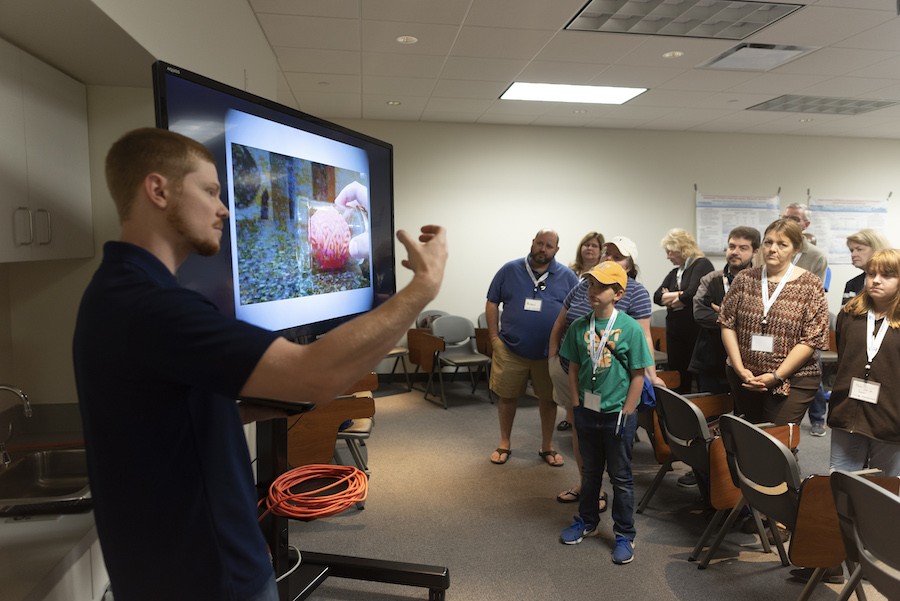
“I am really happy with the response to this activity,” Dr. Goldberg said. “Our visitors were thrilled with the opportunity to see inside working laboratories and to interact so personally with scientists and students. We designed this event hoping that people would be interested, and they were.”
He said he has been a part of similar efforts at science museums and is looking forward to expanding opportunities for the public to experience all that UT Southwestern offers.
“Science outreach is about sharing excitement for science knowledge and education,” Dr. Goldberg said. “Our open lab tours additionally provide guests a chance to learn firsthand about the pioneering research that happens here at the O’Donnell Brain Institute. Our people fielded lots of questions.”
UT Southwestern’s open lab day was the inaugural event for Science in the City, an initiative created by Dallas Morning News science writer Anna Kuchment. In addition to the lab tours, local nonprofit talkSTEM worked with Dr. Ravnik and Dr. Lisa Dennison, UT Southwestern Director of Research Development Communications, to design walkSTEM tours that showcased some of the outstanding artworks on campus.
Dr. Cullum holds the Pam Blumenthal Distinguished Professorship in Clinical Psychology.
Dr. Diamond holds the Distinguished Chair in Basic Brain Injury and Repair.
Dr. Goldberg holds the Linda and Mitch Hart Distinguished Chair in Neurology.


